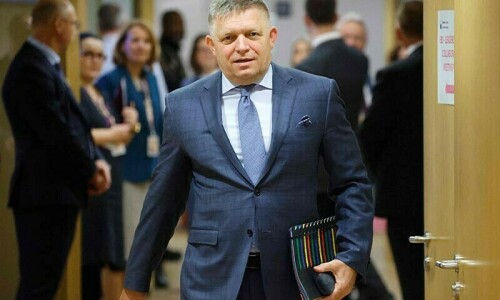THERE is much talk about an under-preparation master plan for Karachi. There have been other plans before which have been reduced to a number of uncoordinated projects because they have not been implemented. Agencies like the World Bank have often stepped in to add their own projects. In preparing these plans, no consultation with Karachi communities or with the users of the projects has taken place.
A master plan is a huge exercise and not just an accumulation of statistics, projections and maps. The most important part of it is to understand who does what, why and where, and their existing and changing relations. This is especially true for Karachi due to its huge informal sector — which we realised after the damage to the economy on the removal of the street economy in 2018 as a result of a Supreme Court decision. Also, it has to be understood that a plan cannot be static, for cities can change over 10 years. Therefore, instead of a plan, strategies are required to deal with the existing and changing nature of the socioeconomic and physical aspects of the city. The renaming of the ‘Karachi Master Plan 2020’ to the ‘Karachi Strategic Plan’, thus, makes sense, though the change in name did not change the content of the document.
The most important aspect of the plan which determines its shape and direction is the vision for the city. For the present plan 2020, the vision is that Karachi is a ‘world class city’, which means that the city should have iconic architecture by which it is recognised; it should be branded for a particular cultural, industrial or other produce or happening. It should be an industrial event city (Olympics, FIFA, Formula 1). It should have high-rise apartments as opposed to upgraded settlements. It should cater to tourism and have malls as opposed to traditional markets. To solve its increasing traffic problems (the result of bank loans for the purchase of cars), it should build flyovers, underpasses and expressways rather than restrict the purchase of automobiles. Doing all this is an expensive agenda, and for it, the city has to seek foreign direct investment and the support of international financial institutions. We have tried to do all this and borrowed heavily for it, but have failed miserably. And the lives of the citizens of Karachi have worsened.
In my opinion, if you wish to have a better city, then the vision should be ‘a pedestrian- and commuter-friendly city’. According to the last survey, the majority of trips in Karachi are made on foot. They can be made much more comfortable by widening the footpaths, paving them properly, removing obstructions on them, planting trees, making low walls on which people can sit, and creating public spaces where possible. Bus stops can be made pleasanter than what they are and can also have well-designed khokhas to cater to the needs of the waiting passengers. From bus stops and major arteries, paved pathways can be created to dense neighbourhoods. At crowded junctions and on broad pavements, Karachi’s thriving street economy can also be aesthetically accommodated.
Karachi has become too large to be planned and managed centrally.
No more pedestrian bridges should be built as they remain underutilised and, given Karachi’s traffic, do not reduce congestion. Manned zebra crossings, which work well where they exist, should be adopted as an option. Physically segregated lanes should be allocated for motorbikes on all of Karachi’s thoroughfares and traffic lights synchronised to promote the flow of vehicles. If traffic can be effectively managed, and land use integrated with it, parking spaces can be created.
All this requires institutional arrangements. Karachi has become too large to be governed, planned and managed centrally. Each district should have its own professionally managed planning and building control agency, and it should have a proper town hall which gives dignity to the district and not the ramshackle environment in which we work today. It is important that in the town hall, there is a space in which projects can be exhibited, which the citizens of the district can visit and give their comments and suggestions, and a committee of planners and citizens can evaluate them and decide on their relevance.
An essential part of the institutional arrangement would be district traffic wardens to manage both traffic and parking arrangements. A programme for all schools to understand environmental and social issues related to district planning and citizens’ behaviour so that a future generation of involved citizens can be created.
However, a simple change in vision to a pedestrian- and commuter- friendly city will alter the nature of projects and planning, which will not only create a better environment, but will also respond to climate change and pandemics.
The writer is an architect and urban planner.
Published in Dawn, April 16th, 2023













































Dear visitor, the comments section is undergoing an overhaul and will return soon.